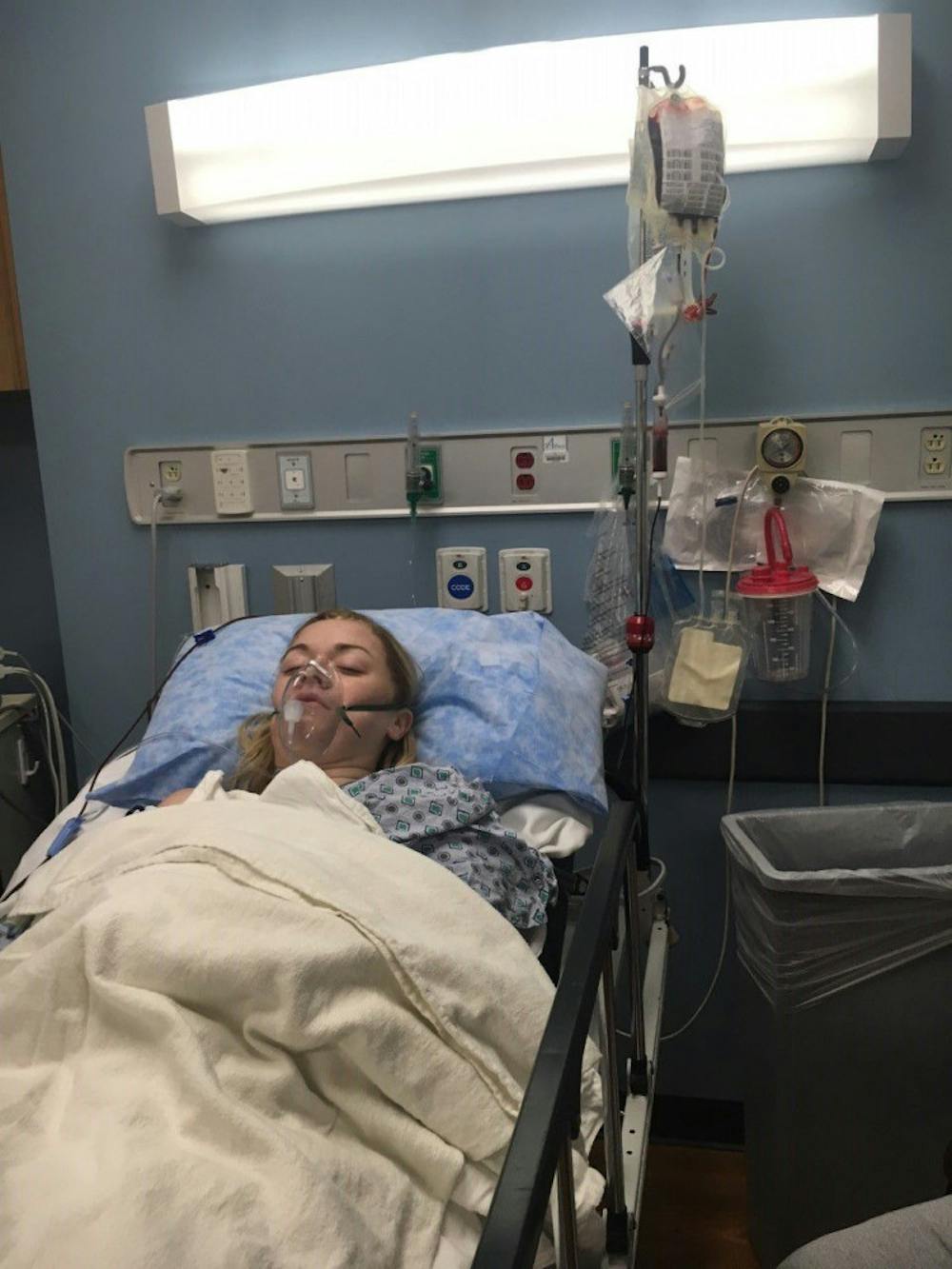
Jordan Booth is donating bone marrow. She donated a liter of bone marrow to a stranger in need while interning at St. Jude Children's Research Hospital in Memphis.
Most people spent their 4th of July partying, grilling and enjoying the fireworks. Jordan Booth spent her holiday undergoing two-hour bone marrow transplant surgery.
It wasn’t because her own health demanded it, but rather for the health of a complete stranger.
Fifty-five vials of blood drawn over the span of three and a half months is just a tidbit of what Booth endured throughout this experience.
It all began after a particularly devastating breakup. Booth was looking for a distraction and heard about an internship at ALSAC with St. Jude, which ultimately turned into a passion for the past year and a half.
It was at the Marathon Expo for St. Jude when Booth found out how to sign up to donate bone marrow.
Originally, she heard people usually don’t hear back for 10 to 15 years, but in her case, Booth found out she was a perfect match after only four months.
As an extremely rare case, Booth was a 10/10 match with her recipient, which is only about a .037 percent chance of happening unless it is an identical twin. Even then, it is basically unheard of.
“The entire experience didn’t cost anything,†Booth said. “The organization DKMS Delete Blood Cancer covered every expense.â€
The expenses included hotels, private cars and all the testing - an EKG, a chest X-ray, a complete physical and a screening to see if she had any types of cancer.
In her case, she experienced a Mature Bone Marrow Harvest, which involves four quarter-inch incisions on her pelvis with a long, hollow needle that breaks into the bone to withdraw the bone marrow in eight different locations. By the end, 1.2 liters of her bone marrow were removed.
Through the initial recovery process, Booth explained various types of pain she endured. “There were times where it felt like an electric shock, or I was healing from a stab wound, and then other times, it was just a dull and achy feeling,†she said.
Nevertheless, Booth remained the epitome of strength and confidence saying, “The pain was totally manageable. I would do it again in a heartbeat.â€
Booth was able to send a letter to her recipient and is hopeful she receives a reply, so she can connect with the person who now shares her DNA.
Looking back at her journey, Booth said, “It was an incredible experience. Honestly, I can’t imagine not doing it.â€






